Things I love, Things I like: from Middle-Eastern interior design to Latin American showgirls
A little list of creative work, social media accounts and exhibitions that are inspiring me right now
Since many of my posts in the last weeks have been more reflective and about deeper topics (and because I’m all about balance, haha, just kidding, I’m really not), I thought this week I’d simply share some things I’ve loved and found inspiring. Just a little curation of creative work and accounts that get me excited.
Sarah Bahbah’s ‘Can I come in’ YouTube series
’ve already spoken about Sarah Bahbah’s work before in the post “Arab artists & initiatives inspiring me right now,” but her new work Can I Come In deserves a spot on this list. So what is Can I Come In? It’s a series of interviews with six women such as Mia Khalifa, Cindy Kimberly, and BANKS, amongst others. In each episode, Bahbah asks the same three questions: “What’s the story you want to tell right now? Do you feel misunderstood by the world? What alter ego are you summoning?”
What’s so cool about it is that it’s kind of like a podcast conversation, only it’s told in a way that’s visually and aesthetically super pleasing, instead of just people sitting in front of a boring microphone. It’s done in Sarah Bahbah’s beautiful cinematic signature style, and I loved reading that each set is personified to the talent. So if they told Bahbah their alter ego wears lace, then they’re wearing black lace. If they said their alter ego was red and silk, then there’s red and silk. If they said their vices were cigarettes, then there are cigarettes. The talents are reflected in every detail, from the drinks they’re sipping to the food around them. They are depicted in a space they would feel safe in.
Apart from the series, Bahbah created a collection of prints featuring stills that encapsulate her signature aesthetic. I love this project. It’s fresh and it’s new. And Bahbah’s aesthetic is beautiful. The first two episodes with Mia Khalifa and Yesly Dimate are now out. And I can tell you already that I very much recognised myself and relationships I had in what Mia Khalifa was saying.
Showgirls by Ficheraz - Instagram account
already mentioned Ficheraz in my piece about Karol G’s Tropicoqueta album, but the account created by Arturo Rico deserves its own post. If you’re looking for inspiration and a creative archive, this is one to follow. The account is dedicated to preserving the legacy of vintage showgirls from Latin America, the Caribbean, and beyond. There’s so much beautiful footage and rich detail to get inspired by, both about the dancers and the fashion. Below some posts that I enjoyed, but check out the account!
Loved thiss video featuring Chelo Alonso, who was a Cuban dancer and actress who became a star in 1950s Europe.
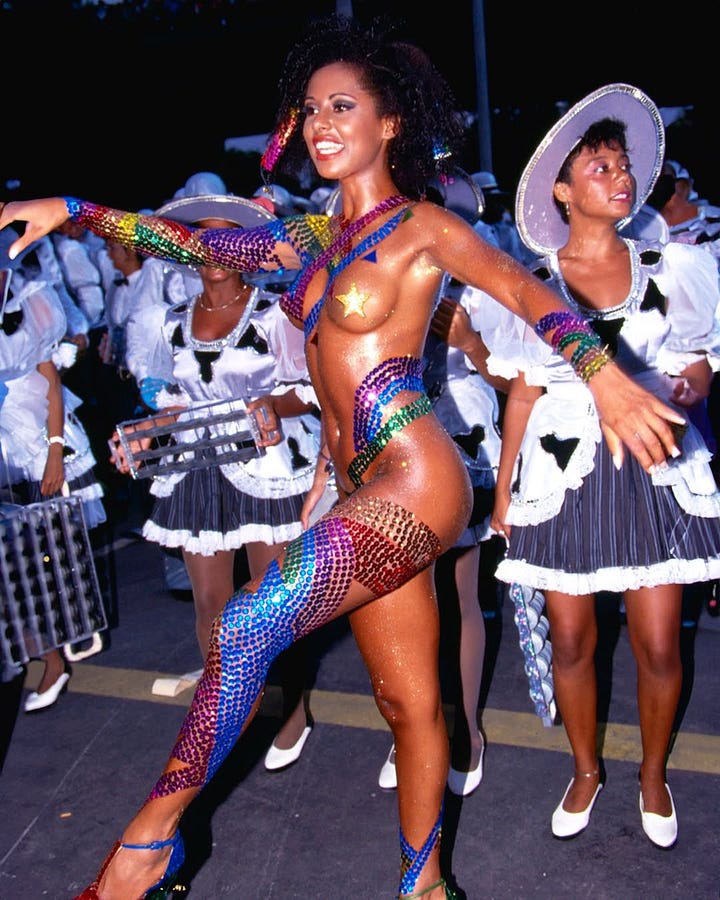
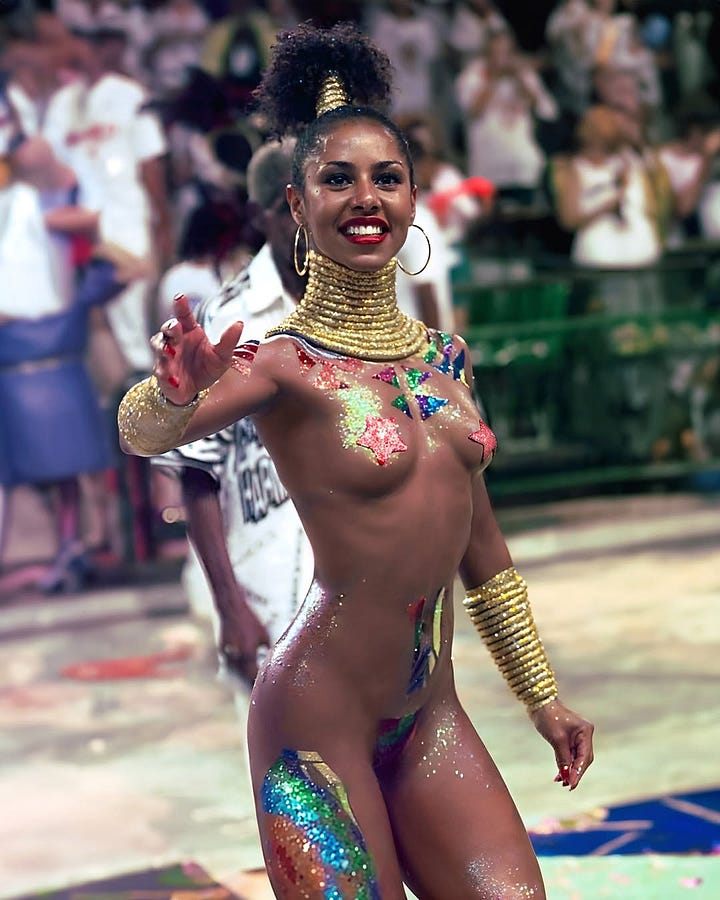

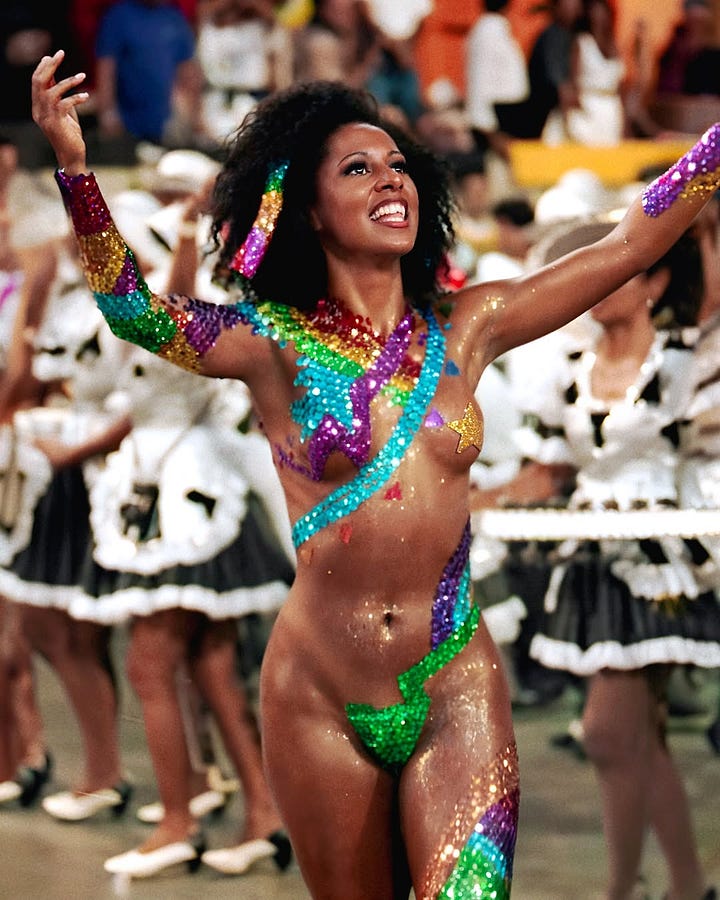
How amazing are these costumes worn by Valeria Valenssa. who entered the Garota de Ipanema contest in 1989 as the only Black woman amongst the competitors. She became famous in Brazil, especially for her daring bodypaints and innovative costumes.
Breathing Art - instagram account
One of my friends shared a post by this account, and I instantly fell in love. The account shares stories about forgotten artists, honest stories about artists we admire but who were terrible people, and background stories on how colonialist art has shaped how we see the world. It’s honestly a beautiful account for people who are into art and history and want to get a wider perspective on art in general.
I especially loved this pos about Orientalism, which is not a style but a gaze, and how colonialist art justified violence by turning conquest into beauty. If you want to read more about this, I also recommend
post about the infantilisation of Arab women, linked belo.There was also this post a friend shared about the Dutch painter Judith Leyster, whose entire oeuvre was once attributed to Frans Hals or her husband, Jan Miense Molenaer, instead of her.
I love eye-opening accounts like this.
She Painted That - TikTok account
A somewhat similar account on TikTok, but this one is completely focused on female painters from all over the world and how they didn’t get the attention they deserved. A place to celebrate women artists. And if your platform of choice is TikTok rather than Instagram, I thought I’d share this one too. Some of the gems I found here:
Faith Ringgold, an artist, author and activist who protested major museums for ignoring people of color and women. Her art focused on racism, injustice and everyday life. When she couldn’t get a solo show, she created her own space in fabric, in paint, and in children’s books. Beautiful.
And Laura Wheeler Waring, who was an artist during the Harlem Renaissance, a key era of Black culture and artistic expression in the early 20th century. She won a scholarship to study at the Louvre, and while everyone around her was white, she painted Black people not as stereotypes but as beautiful individuals.
I love all the short stories here. If you love art, it’s really a go-to account.
Lina Makoul - Radya, with choreography work by Jouana Samia
First of all, I love the song, which Lina explains on her YouTube as a soundtrack for resilience, blending hypnotic melodies with deeply introspective lyrics. It's about surrender without defeat, survival without silence, contentment and gratitude as the silver lining between giving in without giving up. And about Lina, she first became popular in 2013, winning the second season of The Voice in Israel, becoming the first and last Palestinian to achieve that. Since 2020, she has built a fully independent Arabic music career, focusing on narrating her people’s stories and exploring her political identity through honest reflection and personal healing.
What I really love in the video is the choreography by Jouana Samia, which was shot in Berlin with dancers from Lebanon, Portugal, and the UK. To know more about this incredible director and choreographer, the interview below is a great place to start. She talks about art as a form of resistance and her work on tour with Lina Makoul and Saint Levant.
Home too beige? Design lessons from Middle Eastern & North African homes at
t’s safe to say I’m a big fan of
writing, as this is the third time I mention her work in my Substack, and even the second time in this post, but I really enjoyed her writing about design in the Middle East and North Africa.Anyone who’s been to my house knows I really love colour and art. My home is a big collection of beautiful artworks by friends and family, collected pieces from my travels, and personal items. So I really related to this post and the idea of interior design being a beautiful reflection of who you are—a colourful mosaic of your personality. Her post also reminded me of my frustration when living in Sweden, where, in my perspective, all the interiors had a grey couch, white walls, and a beige carpet.
I enjoyed how the piece dug a bit deeper into Western interior design as a symbol of capitalism and suburbia, and then went on to describe Lebanese interior design as a rich tapestry of cultural heritage, personal storytelling, and layered history.
It’s a beautiful work of writing on how culture shapes our design lens. And hell, it might inspire you to bring more colour into your life. I certainly am thinking about what my next couch should look like.
De Nacht van Caribisch Netwerk - Eldrich Pique (Dutch only)
Unfortunately for my Dutch readers only, but hopefully you’ll find a little gem in English about this show soon. I recently listened to the radio show De Nacht van Caribisch Netwerk, in which Surinamese architect Eldrich Pique was featured. With his agency Studio Soela, he created the exhibition Bittere Oogst (Bitter Harvest) at Museum Valkhof in Nijmegen. They built a diorama of the Kerkshoven coffee plantation (1923), which the Dutch owner wanted to present as a world of order and prosperity, buthad a very different story behind its façade. One of slavery, exploitation, cruelty and pain. The exhibition explores the past between the Netherlands and Suriname and asks visitors to reflect on the price of the harvest.
In this radio show, Eldrich Pique talks about this exhibition, how colonialism has massively influenced architectural design, and how we could build differently in Caribbean places, and for people with Caribbean roots. Bittere Oogst can be seen until 31.08 at Museum Valkhof in Nijmegen, and the interview with Eldrich can be found below.
https://www.nporadio1.nl/fragmenten/de-nacht-van/0197671e-c108-7210-abf1-51490ef114ee/2025-06-13-architect-eldrich-pique-over-zijn-tentoonstelling-bittere-oogst-een-surinaamse-plantage-in-nijmegen
That’s it for this week’s inspiration. Anything that inspired you lately? Something you found touching or eye-opening? Please share it with me in the comments.





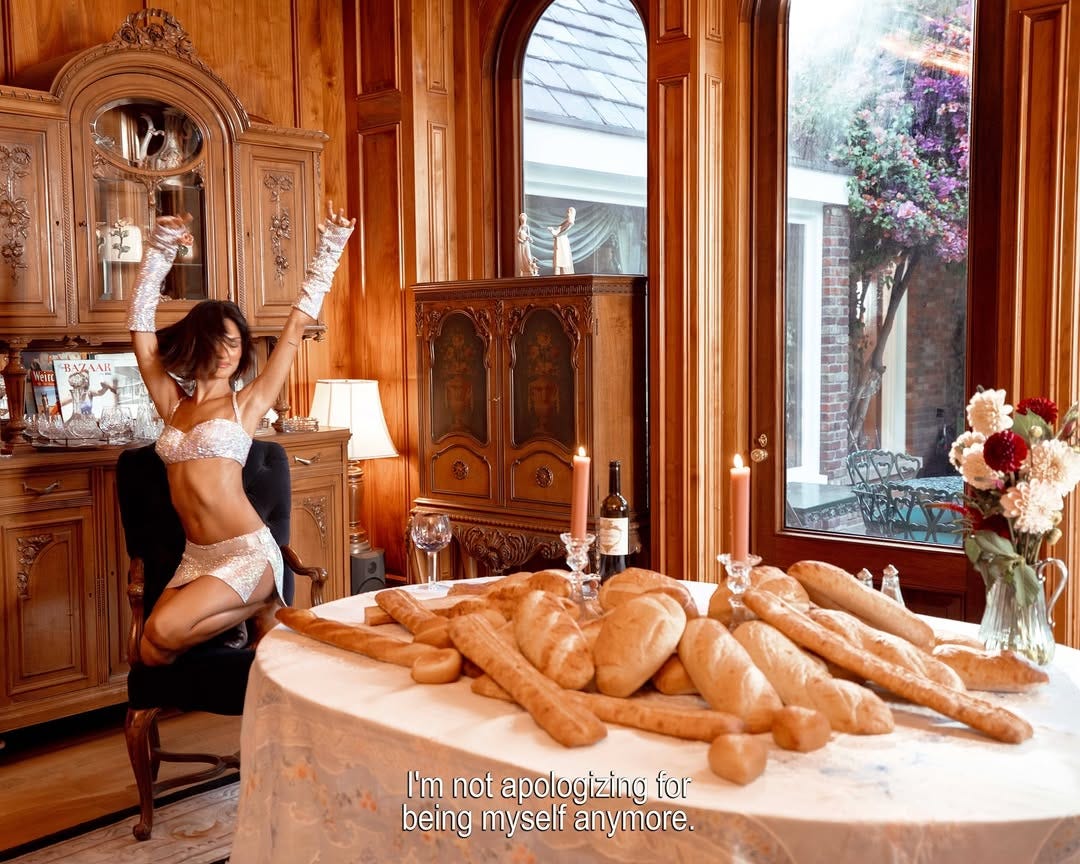
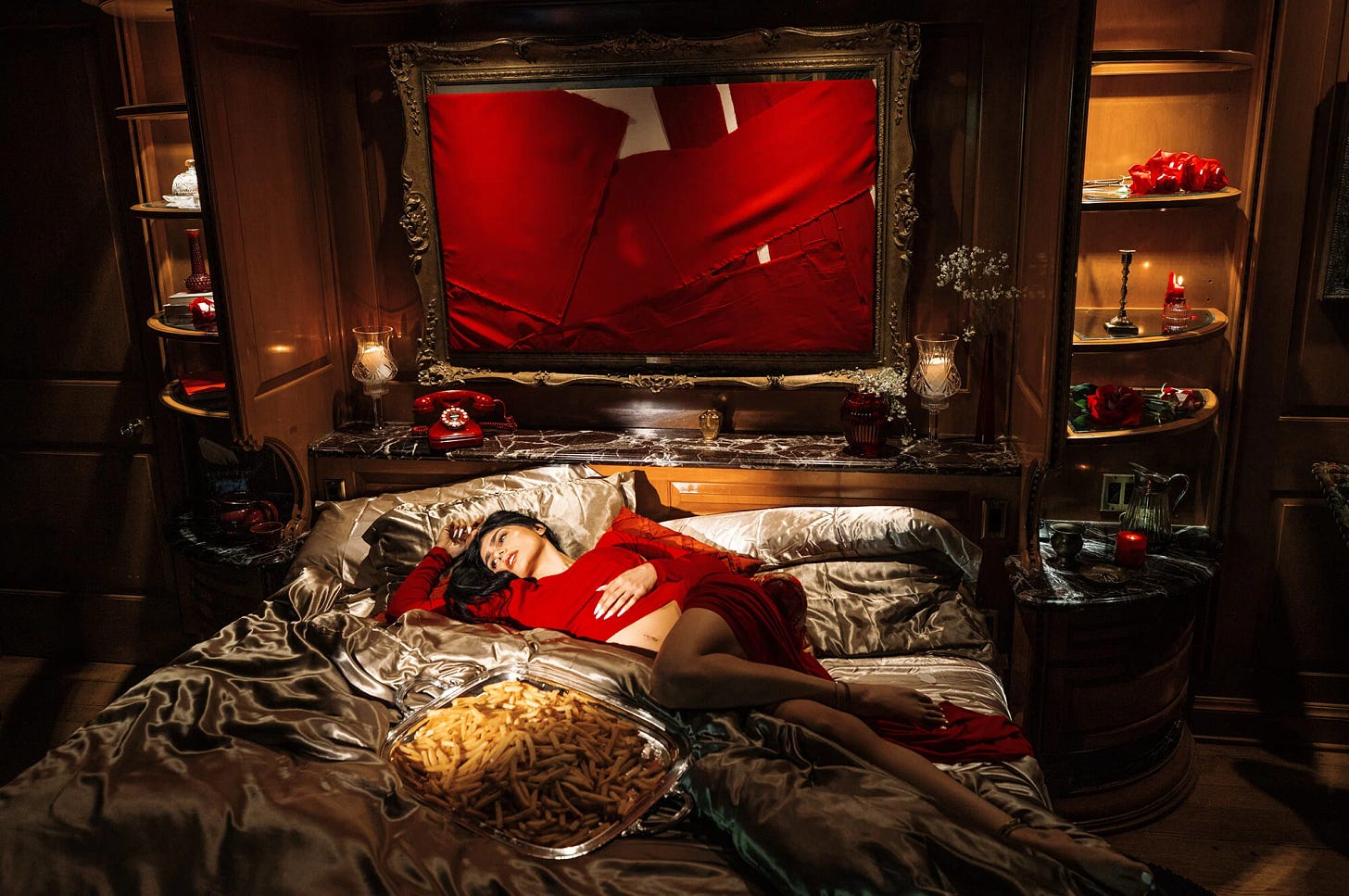




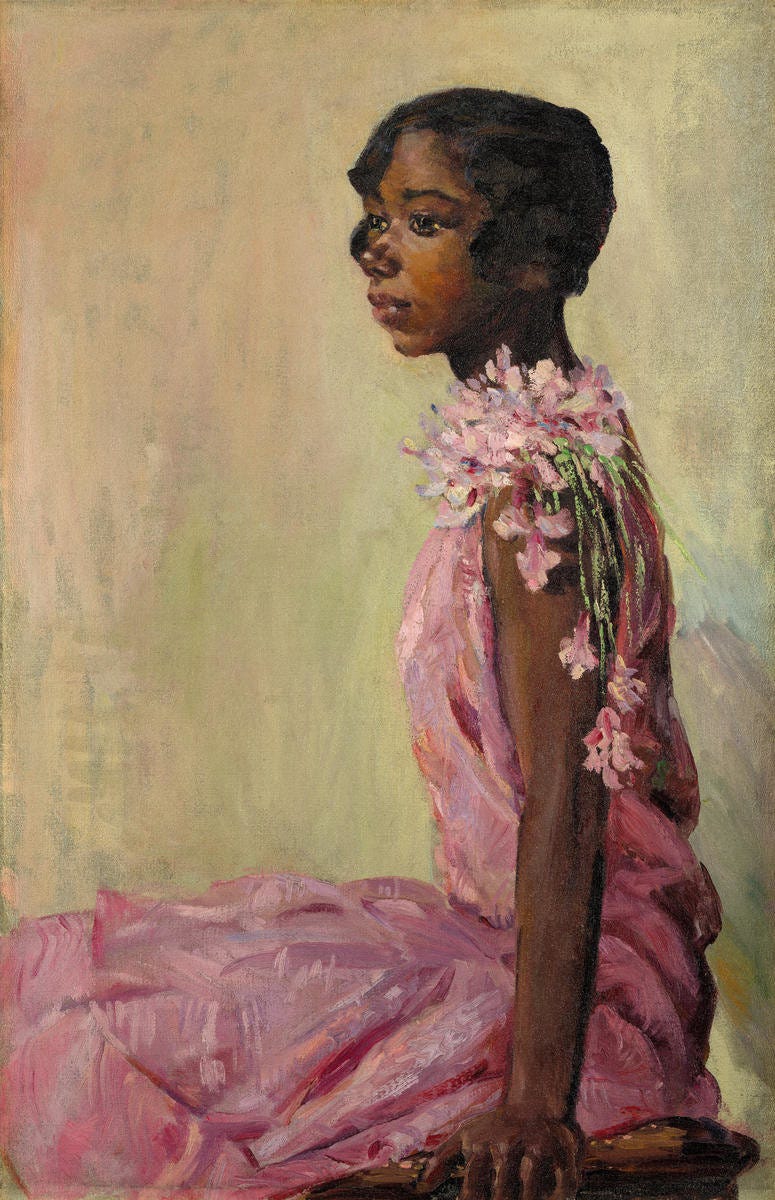



Thank you so much, Marieke, for the mention! Always glad to hear someone is enjoying my work, I really appreciate it (: